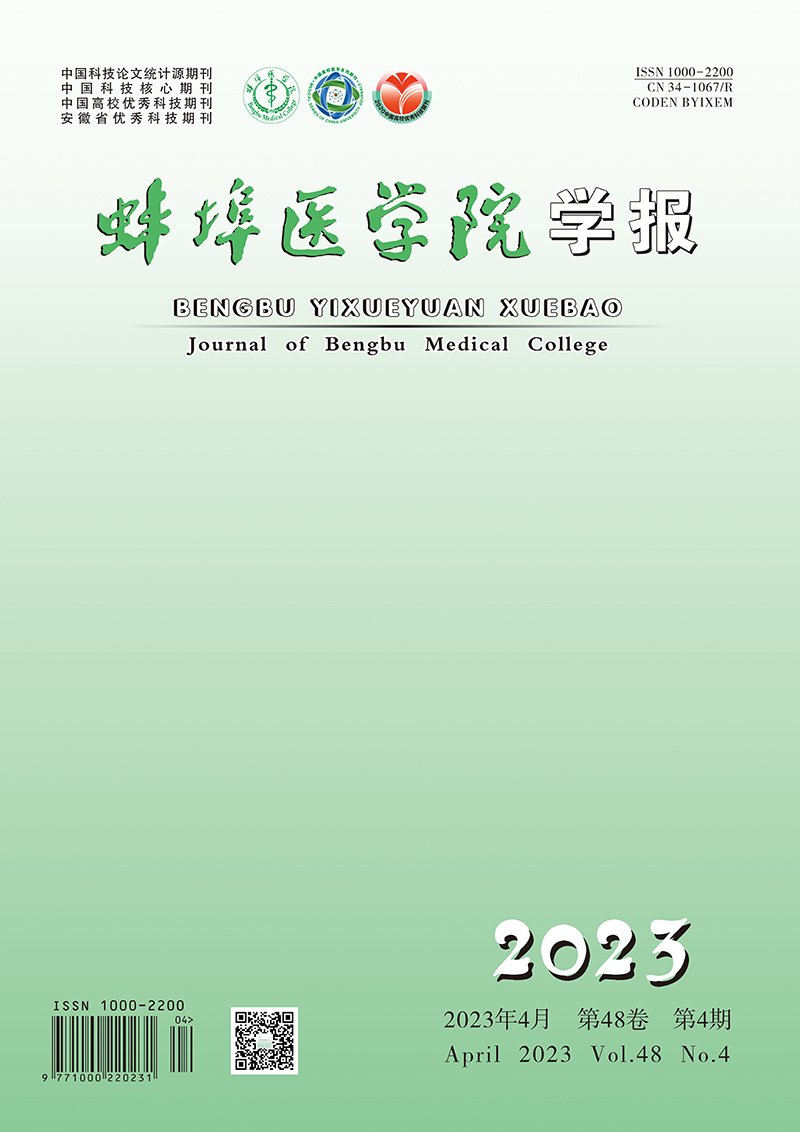-
下腹部手术往往疼痛刺激较为剧烈,疼痛通过腹壁皮肤、腹膜和内脏感觉传递,不良的疼痛刺激影响着病人术后恢复并导致一系列严重并发症的发生。2007年BLANCO[1]最先提出腰方肌阻滞(QLB),在T6到L1节段都能达到有效的阻滞,为临床术后镇痛指引方向。QLB中药物可扩散到至胸椎旁间隙,并且阻滞一部分交感神经,与腹横筋膜腹阻滞(TAP)相比则提供了更加完善的镇痛[2]。本研究比较超声引导下QLB或TAP在老年病人下腹部手术术后的镇痛效果,现作报道。
HTML
-
本研究经我院伦理委员会批准,病人均签署相关的知情同意书。选择2017年1月至2018年7月择期行全麻下腔镜直肠癌根治术的病人90例,年龄65~75岁,性别不限,体质量40~80 kg,ASAⅠ~Ⅱ级。排除标准:对局麻药过敏者、慢性疼痛病病人、滥用阿片类药物者、患有精神类疾病者、有穿刺禁忌证并无法沟通病人。随机分成3组各30例:QLB组、TAP组、单纯全麻组(S组)。3组病人的性别、年龄、体质量及手术时间差异均无统计学意义(P>0.05)(见表 1),具有可比性。
分组 男 女 年龄/岁 体质量/kg 手术时间/min QLB组 14 16 68.77±2.45 62.57±7.62 186.47±18.11 TAP组 13 17 68.80±3.06 62.60±7.59 189.93±19.74 S组 18 12 68.97±2.74 63.7±8.65 186.77±17.61 F 1.87△ 0.05 0.20 0.32 P >0.05 >0.05 >0.05 >0.05 MS组内 — 7.625 63.501 342.635 △示χ2值 -
常规术前准备,外周静脉通路入室后开放,常规监测生命体征。麻醉诱导剂量:0.05 mg/kg咪达唑仑,0.4 μg/kg舒芬太尼,0.3 mg/kg依托咪酯,0.3 mg/kg顺苯硫酸阿曲库铵,经口明视下气管插管在BIS值达45~55时进行,气管导管固定,给予机械通气,参数设置:潮气量(VT)8 mL/kg,呼吸频率12次/分,呼吸比(I: E)为1: 2,氧流量2 L/min,维持呼吸末二氧化碳(PETCO2)在35~45 mmHg。术中维持采用静吸复合麻醉,吸入七氟烷浓度1%~2%之间,丙泊酚3~4 mg·kg-1·h-1, 瑞芬太尼0.15 μg·kg-1·min-1,根据生命体征调整七氟烷、丙泊酚、瑞芬太尼用量,维持麻醉深度BIS值在40~60。根据手术时间,间断给予顺苯硫酸阿曲库铵。围手术期确保血流动力学稳定。
QLB目前分3种入路,QL1入路为腰方肌前外侧,QL2入路为腰方肌表面,QL3入路为腰方肌深面,本研究将QLB组病人于全麻后在超声引导下给予双侧QL2入路的QLB。操作时摆好病人体位,消毒铺巾,使用彩色多普勒超声仪,将探头放置于Petit三角区,可以看到典型的3层腹部结构,移动超声探头找到腰方肌,使用神经阻滞穿刺针,在超声引导下采用平面内进针,穿刺针达腰方肌表面时给予0.375%罗哌卡因20 mL,在超声下可见药物扩散至胸腰筋膜间隙可表明注射成功,对侧QLB也采用同样方法。TAP组病人均于全麻后在超声引导下给予TAP,摆好病人体位,消毒铺巾,使用彩色多普勒超声仪,将探头放置于病人腋前线位置,肋缘与髂嵴之间,找到3块典型肌肉腹外斜肌、腹内斜肌和腹横肌。使用神经阻滞穿刺针,超声指引下进针采取平面内技术,针尖到达腹横肌平面时注射20 mL 0.375%罗哌卡因,并给予对侧TAP阻滞。对照组采用单纯全麻。穿刺技术由同一位高年资医生完成。镇痛满意度采取10分制:10分表示非常满意,5分表示一般,1分表示非常不满意。
3组病人术毕均采用静脉自控镇痛(PCIA),配方为:舒芬太尼2 μg/kg+托烷司琼4 mg,0.9%氯化钠溶液稀释至100 mL。镇痛泵参数设定:无背景剂量,单次摁压为2 mL,锁时15 min,每小时最大量12 mL。术后静息和运动状态下疼痛评分数据的记录由不清楚分组的专业麻醉复苏室护士记录。
-
记录术后4、8、12、24、48 h静息和运动状态下病人的VAS评分,记录3组病人术后4、8、12、24、48 h舒芬太尼总用量及3组病人术中舒芬太尼总用量。记录病人术后镇痛满意度和术后不良反应。
-
采用χ2检验、方差分析及q检验。
1.1. 一般资料
1.2. 麻醉方法
1.3. 观察指标
1.4. 统计学方法
-
QLB和TAP在术后各时点静息及运动时VAS评分低于S组(P < 0.01);QLB组术后各时点静息时VAS评分低于TAP组(P < 0.01),术后4 h运动时VAS评分,QLB与TAP组差异无统计学意义(P>0.05)(见表 2、3)。
分组 4 h 12 h 24 h 48 h F P MS组内 QLB组 1.33±0.88 2.03±1.00△△ 2.53±1.01△△ 2.57±1.01△△ 10.51 < 0.01 0.954 TAP组 1.97±1.16* 2.83±0.95**△△ 3.37±1.16**△△ 3.53±0.94**△△▲ 13.27 < 0.01 1.119 S组 3.23±0.77**## 4.77±1.01**△△## 4.87±1.28**△△## 4.77±0.97**△△## 17.78 < 0.01 1.048 F 31.00 61.13 31.58 38.61 — — — P < 0.01 < 0.01 < 0.01 < 0.01 — — — MS组内 0.904 0.974 1.335 0.948 — — — q检验:与QLB组比较**P < 0.01;与TAP组比较##P < 0.01;与4 h比较△△P < 0.01;与12 h比较▲P < 0.05 分组 4 h 12 h 24 h 48 h F P MS组内 QLB组 2.30±0.75 2.10±0.71 2.87±0.78△▲▲ 2.50±1.04 4.70 < 0.01 0.689 TAP组 2.77±1.10 3.07±0.83** 3.53±0.94*△ 3.43±0.94**△ 3.97 < 0.01 0.917 S组 3.30±0.95**# 4.43±1.00**##△△ 5.10±1.37**##△△ 4.53±1.07**##△△ 13.84 < 0.01 1.231 F 8.42 56.22 35.06 29.88 — — — P < 0.01 < 0.01 < 0.01 < 0.01 — — — MS组内 0.892 0.731 1.123 1.037 — — — q检验:与QLB组比较**P < 0.01;与TAP组比较##P < 0.01;与4 h比较△P<0.05,△△P < 0.01;与12 h比较▲▲P < 0.01 -
QLB和TAP在术后各时点舒芬太尼消耗量少于S组(P < 0.01);QLB组在术后各时点舒芬太尼消耗量少于TAP组(P < 0.01)(见表 4);QLB组术后镇痛满意度高于TAP组和S组(P < 0.01)(见表 5)。
分组 4 h 12 h 24 h 48 h F P MS组内 QLB组 3.07±1.36 16.27±3.63△△ 19.87±4.13△△▲▲ 26.97±6.54△△▲▲■■ 161.05 < 0.01 18.714 TAP组 4.20±1.42** 22.87±3.35**△△ 33.00±4.09**△△▲▲ 33.80±5.83**△△▲▲ 356.01 < 0.01 15.989 S组 6.40±1.92**## 31.27±4.31**##△△ 47.13±5.96**##△△▲▲ 96.60±7.72**##△△▲▲■■ 1 480.66 < 0.01 29.346 F 34.17 118.28 241.35 971.73 — — — P < 0.01 < 0.05 < 0.05 < 0.05 — — — MS组内 2.518 14.344 23.113 45.482 — — — q检验:与TAP组比较**P < 0.05;与4 h比较△△P < 0.01;与12 h比较▲▲P < 0.01;与24 h比较■■P < 0.01 分组 术后镇痛满意度 术中舒芬总用量 QLB组 8.50±0.86 33.85±6.07 TAP组 6.63±1.00** 40.55±3.35** S 4.17±1.09**## 46.83±5.17**## F 144.98 50.70 P < 0.01 < 0.01 MS组内 0.976 24.932 q检验:与QLB组比较**P < 0.01;与TAP组比较##P < 0.01 -
3组病人恶心呕吐发生情况:QLB组3例,TAP组6例,S组5例;头晕发生情况;QLB组1例,TAP组3例,S组5例;3组病人均无呼吸抑制、低血压或局麻药中毒等不良反应。3组病人术后不良反应差异无统计学意义(χ2=3.62,P>0.05)。
2.1. 3组病人静息时和运动时VAS疼痛评分在术后不同时间点比较
2.2. 3组病人镇痛泵舒芬太尼总用量在术后不同时间点比较
2.3. 术后48 h内不良反应发生情况
-
下腹部手术术后疼痛较为剧烈,往往病人难以耐受,疼痛刺激会导致机体炎症因子瀑布式的大量释放,增加术后不良反应发生,影响病人的术后恢复,增加住院时间和医疗成本,甚至威胁病人生命,与我们目前所倡导的快速康复理念不符。多模式镇痛理念在临床应用越来越广泛,良好的术后镇痛越来越得到临床医生的重视。
硬膜外镇痛、静脉镇痛、外周神经阻滞镇痛,是目前临床上多见的镇痛方式,但纵观这些镇痛方式仍具有一定的缺陷。TAP在腹部手术多模式镇痛技术中应用占有一席之地,而QLB是新型的腹部手术术后镇痛方式,临床应用较为少见,主要因素是其阻滞难度大,技术要求高,但由于阻滞范围较广,可用于上腹部和下腹部的躯体镇痛[3-4]。
随着可视化技术的应用,超声在临床麻醉工作中优点显得格外突出[5],2007年BLANCO[1]开启了一项历史性突破的研究,首次提出超声引导下QLB,通过局麻药在腰方肌外侧方、后方及前方的胸腰筋膜内的扩散,达到令人满意的术后镇痛,镇痛持续时间延长,镇痛效果令人满意,这项研究结果让人感到兴奋,将解决病人因术后疼痛带来的不良反应。QLB与目前研究热点的TAP不同,有研究[6]表明它不仅可以抑制躯体疼痛,还可以通过局部麻醉来抑制内脏疼痛。多位学者[7-9]通过尸体染色扩散研究中表示通过将局麻药在腰方肌外侧方、后方、前方的胸腰筋膜内注射,发现QLB目前分为3种,分别为QL1(腹横筋膜与腰方肌外侧交接)、QL2(背阔肌与腰方肌之间)、QL3(腰方肌前侧)3种入路。本研究选择的QLB入路为QL2入路,QL2入路位置比较表浅,距离腹腔内重要脏器较远,相比较其他入路方式来说更加安全。ÖKSÜZ等[10]研究结果表明,在小儿单侧腹股沟疝气修补术的病人,超声引导下QLB比经腹平面阻滞提供更长、更有效的术后镇痛,值得在临床中推广。
本研究采用超声引导下QLB联合PCIA镇痛方式,结果显示其镇痛效果优于TAP,减轻病人疼痛,减少不良反应的发生,镇痛时间持久。本研究不足之处:因位置表浅,容易穿刺,安全性更高,本研究QLB阻滞只采用QL2入路,而QL1和QL3入路未进行研究比较;其次本样本量小,今后条件允许的情况下可进行大样本研究;目前QLB阻滞机制不清,未能进行深入的研究,有待进一步研究分析发现其机制。
综上所述,与TAP相比,超声引导下QLB在下腹部手术中镇痛更加有优势,提供良好的镇痛,减少阿片类药物用量和不良反应,维持更长的镇痛时间,提高病人满意度,值得临床推广应用。






 DownLoad:
DownLoad: